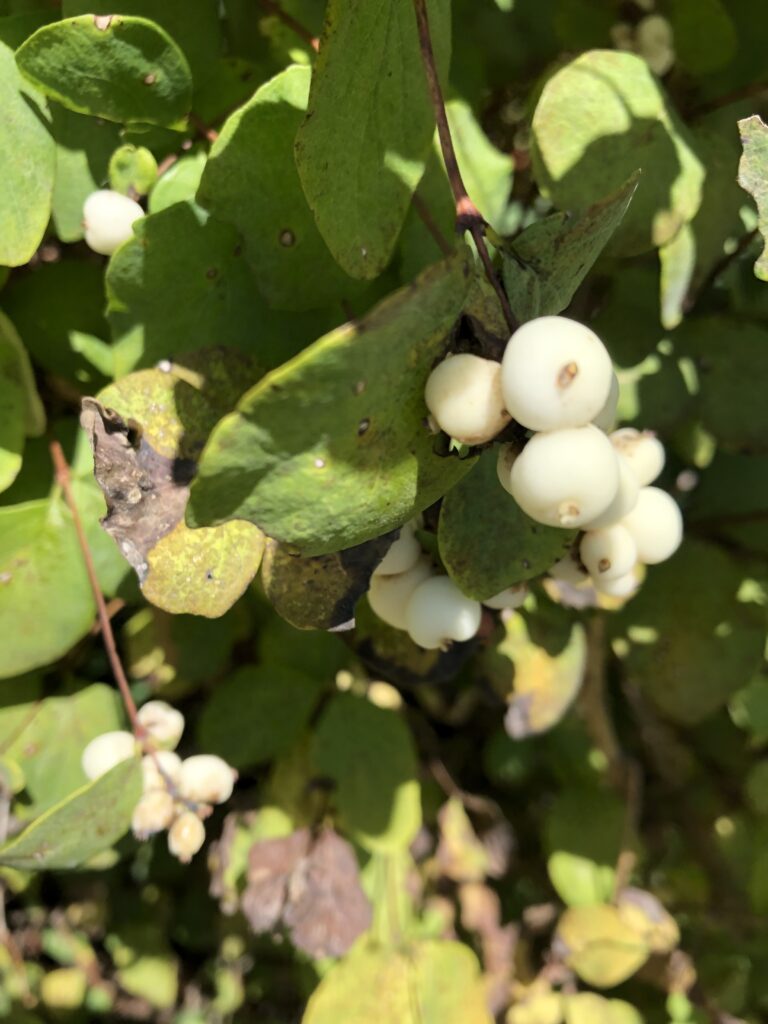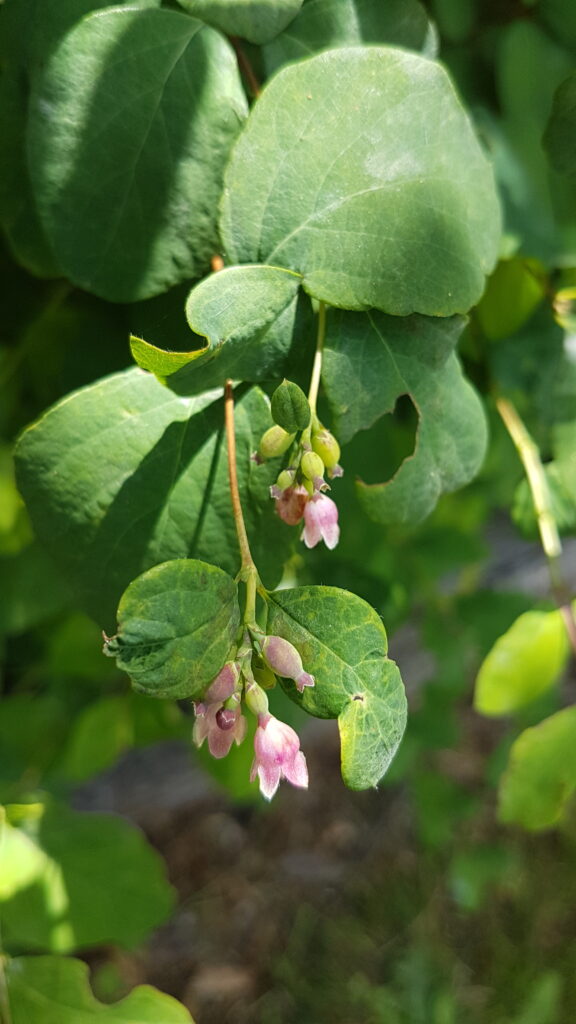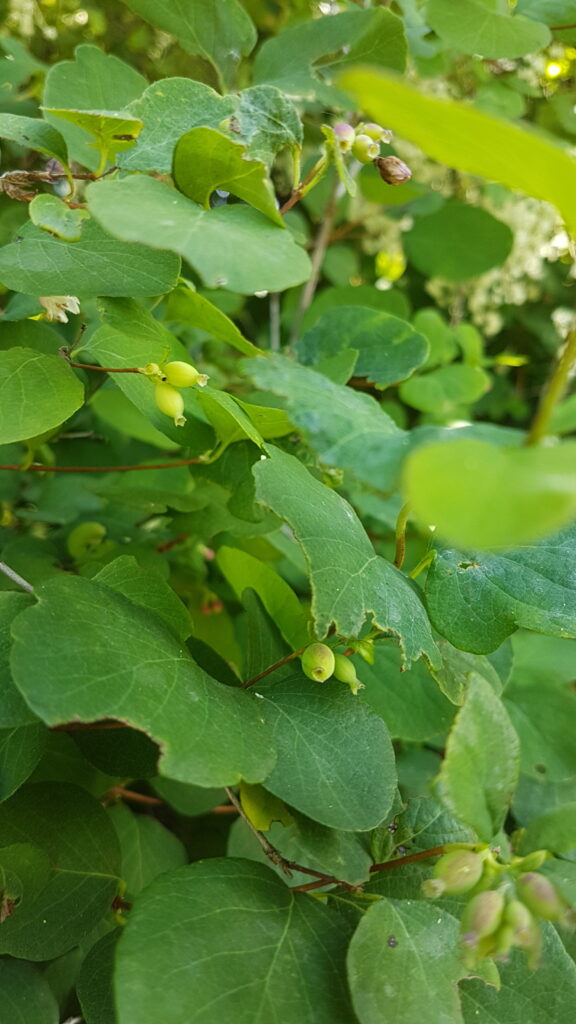Common Snowberry (Symphoricarpos albus)

Common snowberry is a flowering shrub that is native to North America. It has oval-shaped leaves, which can have smooth or lobed edges. The flowers are small and pink, and grow in clusters at the tips of stems or at the bases of leaves. The berries are large and white, and are poisonous to humans and some wildlife, including fish.

The berries are poisonous because they contain saponins. However, saponins also have antimicrobial properties, and the berries were often used by First Nations people to treat burns and sores. The berries could also be used as shampoo, and the branches were used to make brooms and small arrows.

Common snowberry can tolerate a wide range of environmental conditions. In BC, it is often found near riverbanks, or in open areas of forests. It can also colonize recently disturbed habitats, and is important for preventing erosion in these areas. Snowberry is also important for many animal species; the leaves are eaten by deer and moose, and the berries are eaten by birds. Patches of snowberry also provide shelter for birds and small mammals.
For more information about common snowberry, visit E-Flora BC or the Native Plants PNW website.


